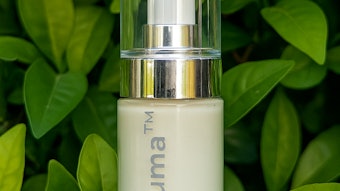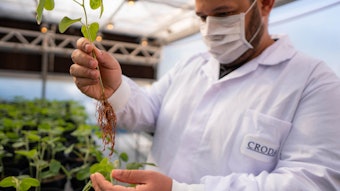- Inflammation, a reaction designed to fight natural aggressions, itself causes tissue damage and, ultimately, signs of aging.
- Inflamm-aging is a self-worsening phenomenon.
- In order to fight inflamm-aging, both internal and external aspects of the phenomenon must be addressed.
Inflammation is a non-specific response of the skin to potential threats to its integrity. Because it is not specific, inflammation is not the perfect response. It is a little blind and can get excessive. It can be destructive to some extent, but it is fast and efficient.
Typical triggers of inflammation include, but are not limited to:
- Pollutants, irritants, smoke—cytotoxic substances (those that have a toxic effect on cells), which trigger the production of free radicals;
- UV light—which generates free radicals.
Inflammation, in short, is a reaction designed to fight natural aggressions, such as bacterial infections, but is also set in motion by the above-mentioned signals. The skin will fight these signals as if they were an infection, but cannot succeed because they aren’t.
And when the inflammatory process is launched, it does not stop. It is a cascade of events that leads, in fact, to the elimination of some of the threats but also causes tissue damage and, ultimately, signs of aging.
Inflammation is a quick response; not a finely crafted one. It could be compared to a carpet bombing—destroying the enemy with certainty but definitely indiscriminately damaging the sites on which it takes place. Even when the detected enemy is not properly eliminated by the inflammatory response, the damage is still done.
For the most part, however, it does the job. Most times, the damage done as a result of the process of inflammation is in no way comparable to the damage that would be done by the aggressor it is fighting.
When these aggressors are detected, the skin cells—fibroblasts and keratinocytes as well as cells of the immune system such as neutrophils and mast cells—generate substances called inflammatory mediators.
Immune cells, such as T cells and macrophages, are attracted to the site of the aggression by the mediators secreted in the first place: IL1 (interleukine 1) and TNF, for instance, are also called cytokines, and they trigger the migration of the cells. “Cyto” comes from the Greek kutos for cell; “kine” from the Greek kinesis, movement.
There is purpose in the mediators—including IL6, IL10 and prostaglandines such as the prostaglandine E2 (PGE2), for example—increasing blood flow to help the migration of cells and the quick elimination of waste products generated by the reaction. The macrophages also produce nitrous oxide, which increases the blood flow further.
These inflammatory mediators will in turn activate the dermal fibroblasts, normally responsible for collagen production as well as cells of the immune system such as mast cells. These cells will produce collagenases and other metalloproteases—a family of enzymes. These enzymes degrade the collagen and other constituents of the extracellular matrix (elastin, hyaluronic acid) to help the migration of immune cells delivered from the lymph nodes to the site of the inflammatory reaction.
Since the activation of the immune response is usually triggered by a bacterial invasion or other types of aggression (chemical pollutants, UV, etc.), the immune cells act to destroy and eliminate the factors that have activated the stress. Remember, this is a non-specific response; pollutants and UV are perceived as invaders because they trigger the same kind of damage in a first phase as bacteria. The elimination of these factors is usually done by producing different types of free radicals, which are highly toxic for bacteria. However, the response activated by the immune cells is generally excessively strong, inducing some severe damage to the healthy cells located nearby the site of injury.
It is easy then to see how low-level irritants, such as pollutants, can trigger an almost ongoing inflammatory reaction that, in the long run, accelerates skin aging.
Inflamm-aging
Recent research on a phenomenon called inflamm-aging is interesting as it really points out chronic inflammation as a major culprit in aging, and brings a new dimension to the understanding of inflammation: that of endogenous inflammation (inflammation caused from within the body).
Inflamm-aging is a phenomenon triggered by the conjunction of chronic repetitive and subclinical inflammation from external aggressors and internal inflammatory mechanisms due to the progressive degradation of systems such as the mitochondrial function.
As you age, there is also a lack in the elimination of oxidated proteins, due to the decay of the proteasome. These proteins will in turn transfer reactive oxygen species (or ROS—highly reactive molecules, such as free radicals, that can damage cellular components) to the cells, further adding to the oxidative damage triggering the inflammation.
In a recent article, a team of Italian scientists1 summarized state-of-the-art research on inflamm-aging and reviewed new hypotheses on the role of mitochondria. The data favored the hypothesis that pro-inflammatory cytokines play an important role in aging and longevity.
The Energy Theory of Aging
The role played by the loss of efficiency in mitochondrial activity and most particularly by the progressive deterioration of the electron transport chain during the generation of energy—producing more and more free radicals for less and less energy—is one of the most promising avenues of research around inflamm-aging.
Production of adenosine triphosphate (ATP)—a nucleotide that is the basic unit of energy that cells use—is reduced, and the generation of ROS (in particular, the hydroxyl radical) increases. These are generated inside the very cell and close the mitochondrial and nuclear DNA, imparting an even more damaging effect than exogenous ROS. These endogenous damages then add onto t
he exogenous damages created by the chronic inflammation triggered by pollutants and other environmental factors.
Oxidized Proteins
The increase in intracellular ROS also increases the level of oxidized proteins inside the cells. Because the proteasome, also a victim of aging, is less active, these damaged proteins stay around longer. Many of these being antioxidant enzymes; the cell then suffers a double damage: loss of efficacy of its normal antioxidative arsenal and added oxidation phenomena due to the release of free radicals by these non eliminated oxidized proteins.
“What this shows us, is that inflamm-aging is a self-worsening phenomenon, which, if not addressed, can only lead to greater damage than it started with,” says Daniel Maes, specialist in the field, industry consultant and former senior vice president of R&D for The Estée Lauder Companies. [He is featured as one of the 2011 “People to Know” in the January/February issue of GCI magazine]. “Just like any chronic inflammation phenomenon, it will not be very obvious and creep into real damage that is then very difficult to fight once it is finally apparent,” he says.
Fighting Inflamm-aging
In order to fight inflamm-aging, both internal and external aspects of the phenomenon must be addressed:
- Fighting the external damage by using anti-inflammatory compounds (antiPGE2, anti IL1, anti IL6, anti PGE2) and antioxidant compounds.
- Fighting mitochondrial damage and protecting mtDNA with products such as the Chondricare from ISP, while also fighting the generation of ROS inside the mitochondria with compounds such as the EuKarion-134 (used in both Lauder and Clinique products), which help the primary antioxidant reactivation.
- Fighting protein oxidation by the reactivation of proteasome (with products such as Prolixir S20 from ISP, or Magassane from Soliance).
References
1. S Salvioli, M Capri, S Valensin, P Tieri, D Monti, E Ottaviani, C Franceschi, Inflamm-Aging, Cytokines and Aging: State of the Art, New Hypotheses on the Role of Mitochondria and New Perspectives from Systems Biology, Current Pharmaceutical Design, 12 24 3161–3171 (Aug 2006)
Marie Alice Dibon, PharmD, is the principal at Alice Communications, Inc., helping companies in the life science sector to develop innovative technologies.










